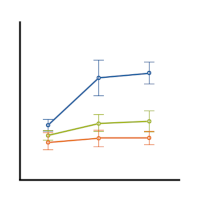 How do you know which method to use when you want to compare groups?
How do you know which method to use when you want to compare groups?

However, this also makes things complicated. With so many analyses that we can use to compare groups, it can be difficult to pick the right one. Which analysis is correct depends on a number of things:
· Do you need to adjust for other things that might be different across individuals, besides the group?
Note: This training is an exclusive benefit to members of the Statistically Speaking Membership Program and part of the Stat’s Amore Trainings Series. Each Stat’s Amore Training is approximately 90 minutes long.
About the Instructor
 Kim is a Statistically Speaking mentor and workshop instructor for The Analysis Factor. She is also owner/lead consultant at K.R. Love Quantitative Consulting and Collaboration.
Kim is a Statistically Speaking mentor and workshop instructor for The Analysis Factor. She is also owner/lead consultant at K.R. Love Quantitative Consulting and Collaboration.
She has worked as a statistical consultant and collaborator in multiple professional roles, most recently as the associate director of the University of Georgia Statistical Consulting Center.
Kim has more than a decade of professional and academic experience in the fields of regression and linear models, categorical data, generalized linear models, mixed effects models, nonlinear models, repeated measures, and experimental design. She has a B.A. in mathematics from the University of Virginia, and an M.S. and PhD in statistics from Virginia Tech.
Just head over and sign up for Statistically Speaking.
You'll get access to this training webinar, 130+ other stats trainings, a pathway to work through the trainings that you need — plus the expert guidance you need to build statistical skill with live Q&A sessions and an ask-a-mentor forum.

Leave a Reply